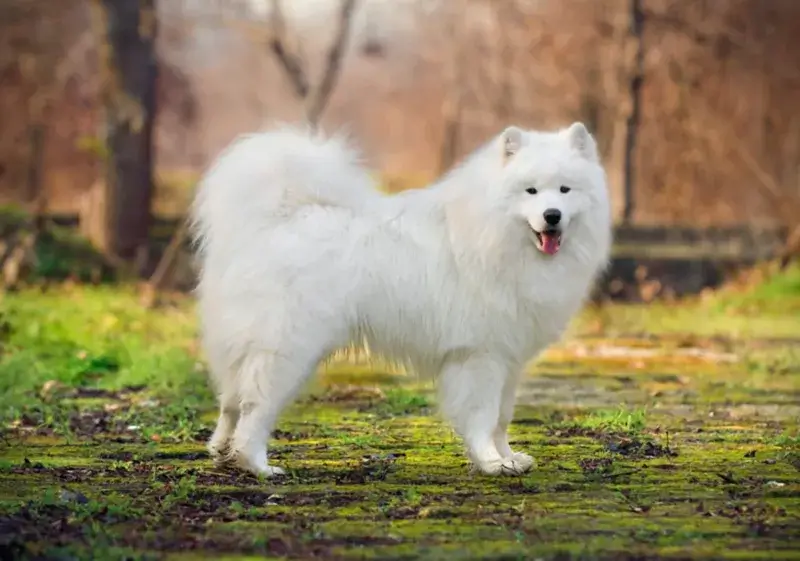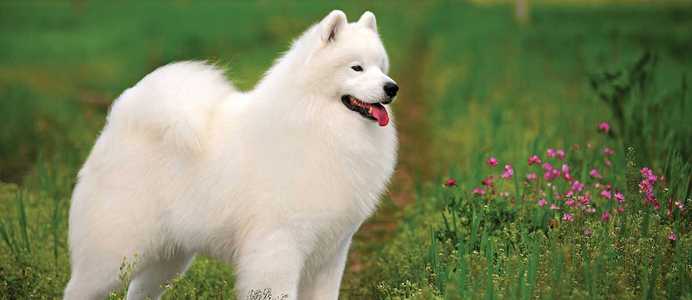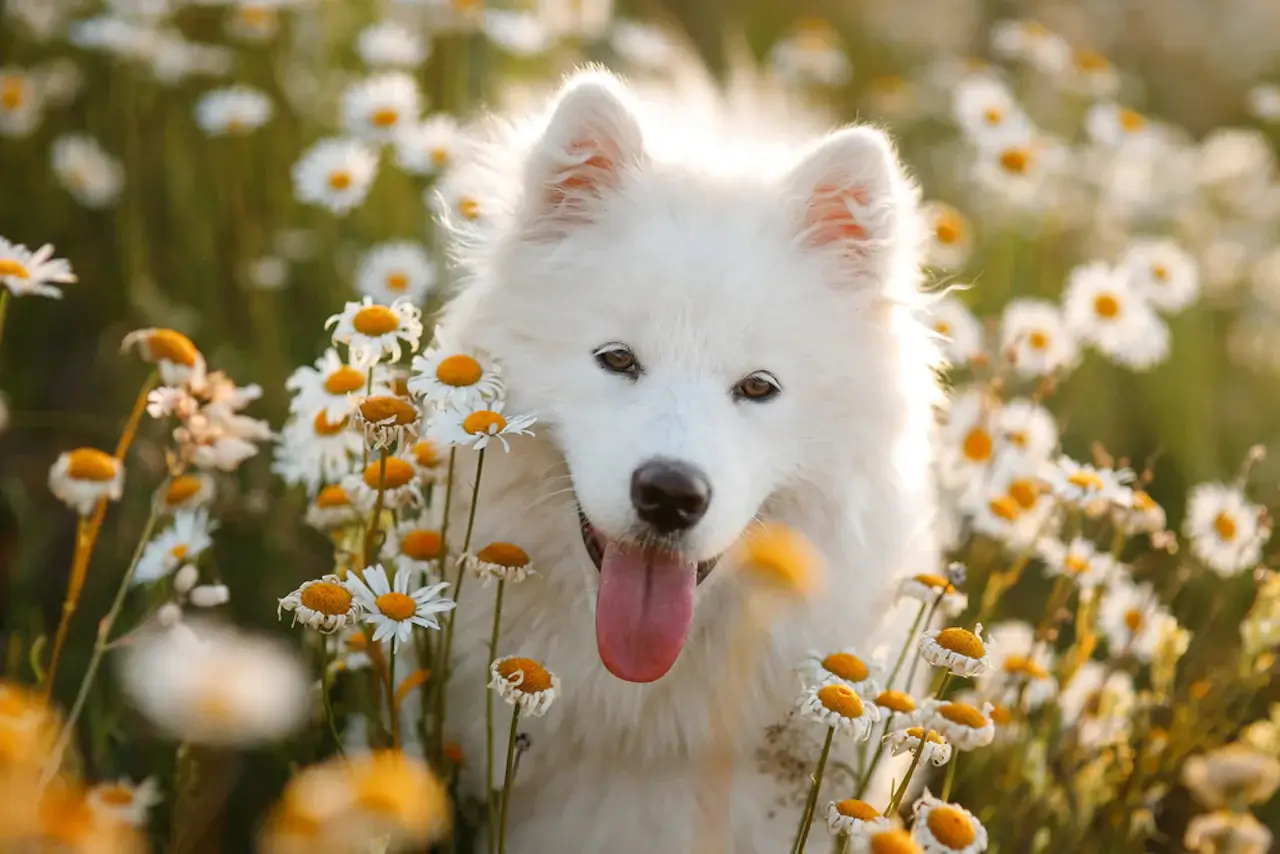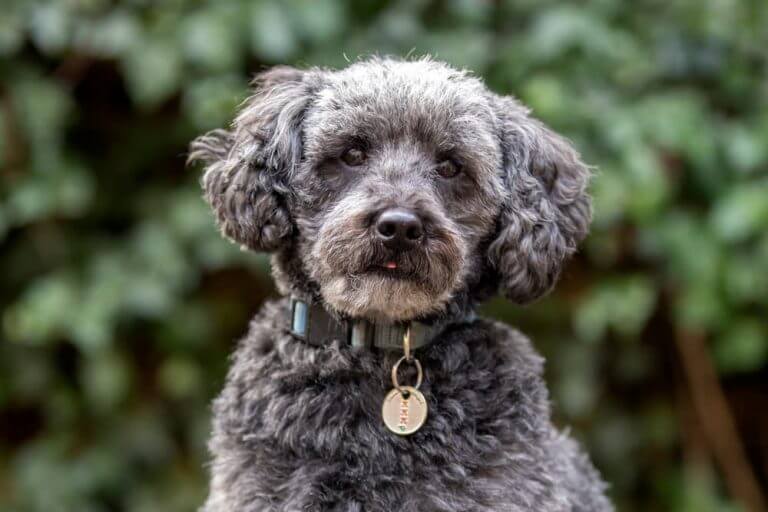Samoyed Dog Breed | Description, Temperament, Lifespan, & Facts
The Samoyed, often affectionately called “Sammie,” is a breed known for its friendly demeanor and stunning white coat. Originally bred by the Samoyede people of Siberia for herding reindeer and pulling sledges, these dogs are well-adapted to cold climates.
They are recognized by their iconic “Sammy smile,” a result of their upturned mouth corners, which helps prevent drooling and, thus, icicles from forming on their face.
Contents
- 1 Physical Characteristics
- 2 Temperament and Personality
- 3 Living Needs and Environment
- 4 Health and Lifespan
- 5 Grooming Needs
- 6 Seasonal Shedding
- 7 Tips for Maintaining Coat Health
- 8 Training Techniques
- 9 Behavioral Traits
- 10 Tips for Addressing Common Issues
- 11 Samoyed in History and Culture
- 12 Fun Facts About Samoyeds
- 13 Is a Samoyed Right for You?
Physical Characteristics

Size and Weight
Samoyeds are medium-sized dogs. Males typically weigh between 45-65 pounds, and females range from 35-50 pounds. Their height at the shoulder is usually around 21-23.5 inches for males and 19-21 inches for females.
Coat and Colors
Their double-layered coat is one of their most distinctive features. The dense, soft undercoat and the harsher, longer outer coat provide excellent insulation against cold weather. While pure white is the most common coat color, Samoyeds can also be cream or biscuit.
Distinctive Features
In addition to their smiling expression, Samoyeds have erect ears and dark, almond-shaped eyes that give them a keen, alert appearance. Their bushy tails curl over their backs, adding to their charming look.
Temperament and Personality

General Temperament
Samoyeds are known for their friendly and gentle nature. They are incredibly social and thrive on companionship, making them excellent family pets. Their playful disposition means they are great with children and can get along well with other pets if properly socialized.
Interaction with Children and Other Pets
Their patience and affectionate nature make Samoyeds wonderful playmates for children. They are generally good-natured around other dogs and pets but should be introduced and socialized early to ensure harmonious relationships.
Intelligence and Trainability
Highly intelligent and eager to please, Samoyeds are relatively easy to train. However, their independent streak can sometimes lead to stubbornness. Consistent, positive reinforcement training methods work best.
Living Needs and Environment
Ideal Living Conditions
Samoyeds are adaptable but prefer cooler climates due to their thick coats. They need a home where they can be part of the family, as they are not suited for kennel life or long periods of isolation.
Exercise Requirements
Daily exercise is essential to keep Samoyed happy and healthy. They enjoy vigorous activities such as walking, running, and playing fetch. Without enough physical and mental stimulation, they can become bored and potentially destructive.
Social Needs
Samoyeds crave human interaction and do best in homes where they can spend ample time with their owners. They are prone to separation anxiety if left alone for long periods.
Health and Lifespan
Common Health Issues
Samoyeds are generally healthy, but they are prone to certain genetic conditions, including hip dysplasia, progressive retinal atrophy (PRA), and hypothyroidism. Regular vet check-ups and responsible breeding practices can help mitigate these issues.
Lifespan Expectancy
The average lifespan of a Samoyed is between 12 to 14 years. With proper care, some can live even longer.
Nutrition and Diet Tips
A balanced diet tailored to their age, size, and activity level is crucial. High-quality dog food, either commercially manufactured or home-prepared with veterinary supervision, ensures they get the necessary nutrients.
Grooming Needs
Regular grooming is a must for Samoyeds due to their thick, fluffy coats. Brushing several times a week helps prevent matting and reduces shedding. During shedding seasons, daily brushing is recommended.
Seasonal Shedding
Samoyeds shed heavily twice a year, often referred to as “blowing coat.” During these periods, they require more frequent grooming to manage the excessive shedding.
Tips for Maintaining Coat Health
Bathing every few months or as needed keeps their coat clean and healthy. Regular ear checks, teeth brushing, and nail trimming are also essential parts of their grooming routine.
Training Techniques
Positive reinforcement techniques, such as treats and praise, work best for training Samoyeds. They respond well to consistent and patient training sessions.
Behavioral Traits
Samoyeds are known for their vocal nature. They enjoy “talking” to their owners and can be quite expressive. Training can help manage excessive barking.
Tips for Addressing Common Issues
Early socialization and obedience training are key to preventing behavioral problems. Providing plenty of exercise and mental stimulation can help curb undesirable behaviours.
Samoyed in History and Culture
Role in Traditional Societies
Samoyeds were integral to the nomadic Samoyede people, serving as herding dogs, sledge pullers, and companions. Their versatility and endurance were crucial for survival in harsh Siberian conditions.
Famous Samoyeds in History
Expeditions to the Arctic and Antarctic often employed Samoyeds for their strength and resilience. One notable Samoyed was Etah, the lead dog for Roald Amundsen’s expedition to the South Pole.
Fun Facts About Samoyeds
Unique Traits
Samoyeds have a unique ability to keep themselves and their human families warm, often referred to as the “Sammy snuggle.” Their fur is hypoallergenic, making them a suitable pet for some people with allergies.
Interesting Anecdotes
Samoyeds are known for their friendly “smile,” which helps keep them from drooling and forming icicles on their faces in cold weather.
Is a Samoyed Right for You?
Pros and Cons
Samoyeds are loving, loyal, and great with families. However, they require significant grooming and exercise. Prospective owners should be prepared for their high energy levels and need for companionship.
Suitability for Different Lifestyles
Samoyeds are best suited for active families who can meet their exercise and social needs. They thrive in homes where they can be an integral part of daily life.
Adoption and Buying Tips
When adopting or buying a Samoyed, look for reputable breeders or rescue organizations. Ensure the puppy or dog has been health screened and meets breed standards.
Related: Newfoundland Dog
Conclusion
The Samoyed is a delightful, intelligent, and loyal breed that brings joy to any household. With proper care, training, and love, they make wonderful companions who will enrich your life for many years. Whether you’re drawn to their striking appearance or their friendly personality, Samoyeds are a breed that stands out in both looks and temperament.
Top FAQs about the Samoyed Dog Breed
Are Samoyeds good family pets?
Yes, Samoyeds are known for their friendly and gentle nature, making them excellent family pets. They are especially good with children and can get along well with other pets if properly socialized.
How much exercise does a Samoyed need?
Samoyeds require daily exercise to stay happy and healthy. They enjoy vigorous activities such as walking, running, and playing fetch. Without enough physical and mental stimulation, they can become bored and potentially destructive.
What are the common health issues in Samoyeds?
Common health issues in Samoyeds include hip dysplasia, progressive retinal atrophy (PRA), and hypothyroidism. Regular vet check-ups and responsible breeding practices can help manage these conditions.
How often should I groom my Samoyed?
Samoyeds need regular grooming due to their thick, double-layered coat. Brushing several times a week is necessary to prevent matting and reduce shedding. During shedding seasons, daily brushing is recommended.
Are Samoyeds easy to train?
Samoyeds are intelligent and eager to please, which makes them relatively easy to train. However, they can be stubborn, so consistent, positive reinforcement training methods work best. Early socialization and obedience training are also important.
- Golden Retriever Pros and Cons: What Every Pet Parent Should Know - 15 September 2025
- Cane Corso Dog Breed: Health, Care, and Lifespan - 14 September 2025
- Catahoula Leopard Dogs: Description, Temperament, Lifespan, & Facts - 21 July 2025







